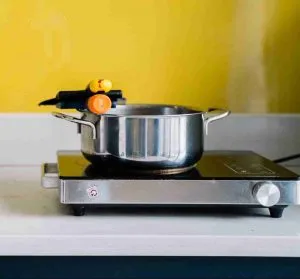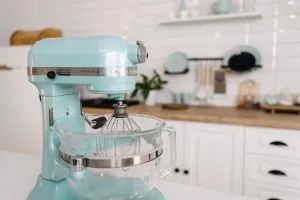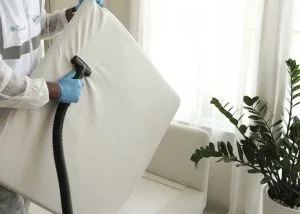Contents
ToggleThe Benefits of Using a Dehumidifier in a Small Room
Achieving Optimal Humidity Levels
Navigating through the challenges of high humidity levels in your living spaces can often be a daunting task. Such excessive moisture can make your environment feel muggy, sticky, and simply uncomfortable. However, this is where a dehumidifier comes in, skillfully extracting surplus moisture from the air to restore a balanced and comfortable atmosphere in your room. In smaller spaces, like bedrooms, bathrooms, or offices, where humidity tends to accumulate more quickly, the use of a dehumidifier becomes particularly crucial.
If you’re unsure of what size to get for these small rooms, you can refer to this comprehensive guide on what size dehumidifier you’ll need for a small room. It will help you to figure out and maintain optimal conditions in your home or office space.
Protecting Your Space from Mold and Mildew
Elevated humidity levels create an ideal environment for mold and mildew to thrive. These pesky invaders can cause unpleasant odors, damage your belongings, and even pose health risks due to their potential to release allergens and irritants into the air. If you’re grappling with mold issues, our detailed guide on how to get rid of mold in bathroom ceilings can help you tackle the problem head-on. By maintaining proper humidity levels, a dehumidifier can be a valuable ally in preventing mold and mildew growth, ensuring your small room remains clean, fresh, and healthy.
Enhancing Indoor Air Quality for a Healthier Living Environment
A dehumidifier doesn’t just tackle humidity; it also plays a vital role in improving your room’s overall air quality. By removing excess moisture, it can help reduce the presence of allergens, such as mold spores, dust mites, and pet dander. This is particularly beneficial for individuals with allergies or respiratory issues, as it can alleviate symptoms and promote a healthier living environment. Furthermore, a dehumidifier can help minimize the proliferation of bacteria and viruses, which also thrive in humid conditions, contributing to a cleaner, safer space.
Preventing Structural Damage and Protecting Your Belongings
High humidity levels can also wreak havoc on your home’s structure and your personal belongings. Excess moisture can lead to warped wood, peeling paint, and deteriorating insulation, which can cause costly damage over time. Additionally, high humidity can damage electronics, books, clothing, and artwork. By using a dehumidifier to maintain appropriate humidity levels in your small room, you’re not only enhancing your comfort and health but also protecting your home and valuables.
DEHUMIDIFIER RANKING
- The Aiusevo AS260 is the leader in the ranking of air dehumidifiers for a reason. Its advantage is considerable efficiency. It is also characterized by 2 operating modes, a large water tank, and a remote controller you will find in a set is definitely a nice touch! As a result, this is the device that best takes care of the optimal level of moisture in the home.
- The second place, however, belongs to the dehumidifier from the same brand as the winner of this ranking. Why? Because of its tank that has the biggest capacity. Why is it second then? Due to its efficiency which is simply lower than the previous machine. Besides this, it still has 2 working modes and a hidden slot for the power cord which is a nice future differentiating this device from the others.
- The third place on the podium belongs to Hysure with its great filter preventing allergens and dust from spreading around your room. As well as the previous devices this one also has been equipped with one of the biggest tanks on the market when it comes to small dehumidifiers.
- Are you interested in dehumidifiers that work quietly? The Makayla MD305 model is one of them. In addition to quiet operation, it is characterized by good performance, two modes of operation, and many colors of the backlight. And although he was beyond the podium, it is still worth paying attention to.
- In order for a dehumidifier to pass our air dryer test, it must be energy efficient, among other things. It is good if it is also made of good materials. Therefore, if you are looking for just such a device, check what the Pro Breeze dehumidifier offers.
- Are you looking for a dehumidifier with a removable filter and medium size tank? Season may be a good choice for you! Lower price as well as great customer service makes this brand a popular choice.
- Sanvinder is the smallest device in our ranking, nonetheless, some say its design is the best. A transparent tank and several atmosphere lights available make it stand out from the competition. It may also be one of the best options for your RV or very small room. Despite its small size, efficiency is still satisfying!
- If you are a person who pays attention to the length of warranty this is the item for you. Producent in this case offers 5 years warranty! PureDry Mini not only is made from good quality materials that make it looks solid but also its featherweight is only 2 lbs.
Factors to Consider When Choosing a Dehumidifier
Size of the Room
The first thing to consider when choosing a dehumidifier is the size of the room you want to dehumidify. Small rooms, such as bedrooms or bathrooms, typically require a smaller, more compact dehumidifier. To ensure you’re choosing the right size, measure the square footage of your room and look for a dehumidifier with a capacity that matches or exceeds that number.
If you’re wondering how well dehumidifiers work in small rooms, this comprehensive guide on the efficiency of dehumidifiers in small rooms offers a wealth of information.
Capacity of the Dehumidifier
Dehumidifiers come in various capacities, which refers to the amount of moisture they can remove from the air in a 24-hour period. This is typically measured in pints. For a small room, you’ll likely need a dehumidifier with a capacity of 20 to 30 pints per day.
If you’re uncertain about when to use a dehumidifier or how to determine the most suitable capacity for your needs, this comprehensive guide on when to use dehumidifiers can provide you with valuable insights.
Important Features
When shopping for a dehumidifier, consider the features that are most important to you. Some common features include:
- Adjustable humidity settings: This allows you to set your desired humidity level, and the dehumidifier will automatically maintain it.
- Automatic shut-off: This feature turns off the dehumidifier when the water tank is full, preventing overflow and potential damage.
- Timer: With a timer, you can set the dehumidifier to run for a specific amount of time, such as while you’re at work or overnight.
- Washable air filter: This can help save money on replacement filters and ensures your dehumidifier is always operating efficiently.
1. AIUSEVO AS260
Huge water container
The device’s performance stands out a lot in this case. It can remove even 1000ml (34 oz) of water over 24 hours of working time. However, the optimum working environment must be provided. It is more or equal to 68F and humidity between 50%RH – 80%RH. Nevertheless, this dehumidifier can cope with 50-104F temperatures and can cover a range from 40 sq ft to 680 sq ft. Aiusevo AS260 is distinguished by the fact that it has a Massive tank (2000ml-68oz) that is easy to empty with an auto shut-off system and red light informing you when it’s full. Two operating modes will make it easier for you to use the device during the day and at night fully it will not disturb your sleep. (day up to 39dB, night less than 30dB)
The smart choice for a drier home
This dehumidifier is the only one that allows you to control it remotely. There are 3 buttons on the remote controller you can use. One is for power, the second for speed, and the third for lights. Its 10m range is also pretty good and moreover, the idea of attaching the remote controller to the device’s body is well thought out so you won’t lose it so quickly. Another great thing to pay attention to is that the dehumidifier turns on by itself when humidity raises above 45%RH so you can enjoy good quality air in your room without wondering when to switch it on. And for those who like to feel protected, it is also worth mentioning that we are offered 2 years warranty!
| ADVANTAGES ✔ remote controler ✔ large water reservoir ✔ good efficiency ✔ very quiet |
| DISADVANTAGES ❌ control panel could also be placed on the device |
2. AIUSEVO AS190
Very efficient
This device is the largest one in this ranking however, it is able to be placed in a room of up to 680sq ft. The water reservoir used here has 88oz (2500ml-85oz) of capacity. Due to the fact that the tank is relatively large, it can be emptied once every 3 days. 27 oz of it should be quickly filled with water after 24h when the optimal temperature in the room is kept. Producent also made 2 operating modes, daytime fast and nighttime slower, making the device much quieter (less than 30dB). When the tank is full, it turns off automatically, and, similarly to others, we are informed about it by to the red light.
Compactible
Aiusevo has also equipped this model with 7 different colored lights that can be freely switched or completely turned off. An additional advantage of this device is that at the back we have a place to hide a cable, which makes it even easier to move to a camper or other room. Despite its larger size, it is also energy efficient. The manufacturer gives us a one-year warranty and lifetime customer service.
| ADVANTAGES ✔ the largest tank in whole ranking ✔ space designed for winding the cable ✔ 2 modes ✔ very good efficiency ✔ superior customer service |
| DISADVANTAGES ❌ more expensive than competitors |
3. HYSURE T8Plus
The ultimate solution for excess humidity
Hysure has one of the largest tanks on the market – 70oz (2000ml-68oz). The manufacturer states that the device should collect 25oz of water per day. The working area is up to 500sq ft and the optimal temperature is from 50 to 122°F. Hysur’s weight is 5.06 lbs. The device is quiet thanks to whisper-quiet Peltier technology so the sound of the working dehumidifier is less than 35dB. Even though the device is larger than the rest of this type, it still consumes only 0.96KW per 24H!
Dust-resistant filter
The device is equipped with a dust-resistant filter that can be easily removed and washed. It prevents the spread of the pet’s hair and allergens. Like other devices, it also turns off when the water tank is full.
| ADVANTAGES ✔ dust proof filter ✔ large water tank ✔ low energy consumtion ✔ high efficiency |
| DISADVANTAGES ❌ only 1 working mode |
4. Makayla MD305
Energy saving
Makayla is a device that can get rid of about 600-650ml (22oz) of water from the air at 80% RH. Also noteworthy is the low power consumption – only 22.5W / hour. The device has been equipped with 2 operating modes. Night generating 30dB and day mode not exceeding 39dB. When using the device at night, we can choose one of the seven light colors that can also be turned off if we prefer to sleep in complete darkness. When it comes to the area Makayla can cover, it’s one of the best in this ranking! Regarding the manufacturer, it’s even up to 550 sq ft.
Great quality casing
The water tank is easy to empty and has an auto shut-off option with a red light indicating the tank has been filled up. In order for the device to be efficient, it is worth taking care of the optimal temperature at which it will work. It is from 46 to 104°F. What’s worth mentioning is the quality of materials used in the production. The plastic chosen for the casing ensures that the device should not break even after falling on the ground.
| ADVANTAGES ✔ the dual speed with quiet mode ✔ auto stop when the tank is full ✔ large water container |
| DISADVANTAGES ❌ fan could work faster on high speed |
5. PRO BREEZE
Tiny…
Pro Breeze is a small dehumidifier that easily copes with extracting 18oz of water per day covering an area of up to 250 square feet. It has a large 52oz tank that takes some time to fill up, once it’s full, the LED indicator will appear and the machine will turn off by itself preventing your room from the flood. Similarly to the other devices of its type, the process of emptying the water tank is really easy. Additionally, you can also use a water outlet which makes it even more convenient to use.
…but efficient and well built
The device is small, so it can be used in a small room, garage, bathroom, or basement. What’s more, Pro Breeze is also very efficient due to its Built-in Thermo-Electric Cooling Technology (Peltier) and like most small dehumidifiers optimal working temperature for this device is from 59 to 86°F. As well as in Makayla, the plastic used here is solid so it’s a great advantage when you are planning to move it from room to room.
| ADVANTAGES ✔ quiet ✔ energy efficient ✔ capasious water tank as for such device size |
| DISADVANTAGES ❌ water reservoir could have been designed to be opened up |
6. SEAVON
Make your room colorful
The device is equipped with 7 backlight colors that can be freely personalized. There is an option to choose one of the colors or to set them to change automatically. If we do not want to use this option, we can also turn it off. Seavon has a large 1000ml (34 oz) water tank with an automatic shutdown feature when the water reaches 700-800ml (25 oz). The device will also inform us about it by lighting the red light which will prevent the water from spilling out. Moreover, this dehumidifier can pull up to 450ml (15 oz) of water per 24h and its working environment is 59-104°F, humidity 50%RH-90%RH
Reliable dehumidification
The device is very quiet even during the day (35dB-39dB) It surely makes it a smart, suitable choice for the office environment. Likewise, night mode is even quieter due to its low speed. It then makes less than 30dB. At the back of the device, however, we can find 2 interesting things. The first one is a nice integrated handle which makes it easy to carry and the second is an air filter located just under the handle, that will prevent dust or pet hair from spreading around the room. Moreover, it’s easy to remove and clean just with one snap of your finger.
| ADVANTAGES ✔ air filter ✔ large water tank ✔ auto shut off ✔ great customer service |
| DISADVANTAGES ❌ loud beeping sound while turning on |
7. SANVINDER
Small size
The illuminated tank is able to collect 750 ml (34oz) of water and like others, once it’s full, the device will switch off by itself informing us about it by the red backlight. Daily efficiency however is 450ml (16oz) in 86F temperature and 80%RH of humidity. It works best in rooms between 50 and 300 sq ft!
Outstanding design
This device is quiet, it sounds about 35dB. Among those devices, it is extremely energy-efficient as it consumes only 0.96KW per 24H. It is also another dehumidifier that will make our interior more pleasant in the evening. Thanks to the 7-atmosphere lights that are pleasant and delicate to the eye. In addition, they also can be completely turned off.
| ADVANTAGES ✔ nice design ✔ affordable ✔ efficient ✔ little size |
| DISADVANTAGES ❌ light at the top of the device can’t be turned off |
8. PureDry Mini
Solid plastics
This dehumidifier is quite efficient despite its small size. Able to get rid of approximately 300ml (10oz) of water from the room per day. It is very light, weighing only 2 lbs. The good quality of the materials from which the device is made also deserves attention. Definitely doesn’t look cheap. The water tank used here has a capacity of 27 oz. And as we mentioned earlier, the manufacturer has provided us with a 5-year warranty!
A long warranty will keep you secured
Similarly to the other devices, we also get an automatic shutdown function that notifies us by the red LED light when the tank is filled. How big a room is this small dehumidifier suitable for? It works best in rooms not exceeding 110 sq ft. However, it’s very quiet doing its job!
| ADVANTAGES ✔ good production quality ✔ 5 years warranty ✔ quiet ✔ light and portable |
| DISADVANTAGES ❌ a bit pricey |
Proper Maintenance and Care for Your Dehumidifier
To ensure your dehumidifier runs efficiently and lasts for years to come, it’s crucial to provide it with regular maintenance and care. The following tips will help you keep your dehumidifier in tip-top shape:
Regular Cleaning and Maintenance
Water Tank Maintenance
Proper maintenance of your dehumidifier’s water tank is crucial in ensuring the longevity and efficiency of the unit. This tank collects the moisture pulled from the air and needs to be regularly emptied and cleaned to prevent mold, mildew, and bacteria from thriving. It’s best to empty the tank every few days or when it’s full, whichever comes first.
To clean the tank, a mixture of warm water and mild detergent or vinegar can be used to effectively remove any residue or buildup. Once cleaned, rinse the tank thoroughly and let it air dry before placing it back into the dehumidifier.
If you’re interested in learning more about water gathered by your device and how you can use it, you can check out this informative article on whether water from a dehumidifier is distilled.
Air Filter Upkeep
Dehumidifiers typically have an air filter that captures dust, pollen, and other airborne particles before they enter the unit. This filter should be cleaned or replaced regularly, depending on the manufacturer’s recommendations. Generally, this should be done every three months or when the filter appears visibly dirty. To clean a washable filter, simply rinse it under warm water and allow it to air dry before reinstalling it. For non-washable filters, replace them as needed to maintain optimal performance.
Coil Care and Cleaning
The coils of your dehumidifier are critical components in the process of moisture extraction. As time passes, these coils can become a magnet for dust and debris, which can compromise the efficiency of the unit and potentially lead to functional issues. Maintaining the coils, therefore, is essential for the longevity and performance of your dehumidifier.
To clean the coils, first ensure the dehumidifier is unplugged for safety. Then, carefully remove the outer casing to reveal the coils. Using the brush attachment of your vacuum cleaner, you can gently clean the coils, ensuring all dust and debris are removed.
Performing this maintenance routine at least once a year is recommended, although more frequent cleanings may be necessary if you reside in a particularly dusty environment. Moreover, it’s essential to note that dehumidifier coils can sometimes ice up, especially in colder conditions. If you encounter this issue, you can learn more about why this happens and how to fix it in this insightful article on why dehumidifiers ice up.
Storing Your Dehumidifier When Not in Use
If you live in an area with seasonal humidity fluctuations or don’t need to use your dehumidifier year-round, proper storage is crucial to prolong its lifespan. Before storing your dehumidifier, follow these steps:
- Empty and clean the water tank.
- Clean or replace the air filter.
- Allow the unit to dry completely, ensuring no moisture remains inside.
- Wrap the power cord neatly and secure it to avoid damage or entanglement.
Choose a cool, dry location for storage, such as a closet or basement. If possible, use a cover or a breathable cloth to protect the dehumidifier from dust and debris while in storage. By following these storage guidelines, you can ensure your dehumidifier remains in optimal condition and is ready for use when needed.
Maximizing the Efficiency of Your Dehumidifier
Now that you’re well-versed in choosing and caring for your dehumidifier, let’s dive into some tips for using it effectively in your small room.
Strategic Placement for Optimal Performance
The placement of your dehumidifier plays a crucial role in its performance. Position it in a central location within the room to ensure maximum airflow and efficiency. Keep the unit at least six inches away from walls, furniture, curtains, or other obstacles that could restrict airflow and hinder its effectiveness. This will allow the dehumidifier to pull moisture from the air more efficiently, providing you with a more comfortable living environment.
Monitoring and Adjusting Humidity Levels
To maintain optimal humidity levels in your room, use a hygrometer to measure the relative humidity. This device will help you determine whether your room’s humidity is within the recommended range of 30% to 50%. If the humidity levels consistently fall outside this range, adjust your dehumidifier’s settings accordingly. Some dehumidifiers come with a built-in hygrometer, offering a convenient way to monitor and adjust the humidity levels automatically.
To learn more about the relationship between dehumidifiers and room temperature, this in-depth article on whether a dehumidifier can cool a room offers valuable insights.
Consistent and Efficient Operation
Consistent operation of your dehumidifier is essential for maintaining an optimal and healthy living environment, especially during periods of high humidity. This can often be the case after a rainstorm or throughout the sticky summer months. Using your dehumidifier sporadically or only for brief periods may not offer the same level of humidity control and comfort that regular use can provide.
However, while frequent use is beneficial, it’s also important to avoid overusing your dehumidifier. Overworking the unit can lead to unnecessary wear and tear, potentially shortening its lifespan. Therefore, it’s advisable to follow the manufacturer’s recommendations regarding runtime.
Many dehumidifier models come equipped with useful features like automatic shut-off or timer functions. These can greatly aid in managing the operation of your unit more efficiently, ensuring it runs just the right amount to maintain ideal humidity levels without overdoing it.
It’s worth noting that in the process of dehumidifying, some models might give off warm air. If you notice your dehumidifier blowing hot air, you can read more about why this happens and what you can do about it in this detailed guide on why dehumidifiers blow hot air.
Sealing Your Room to Prevent Excess Moisture
To maximize your dehumidifier’s effectiveness, it’s essential to create a well-sealed environment in your room. This helps prevent excess moisture from entering, allowing your dehumidifier to work more efficiently. Inspect your room for any gaps or cracks around windows, doors, and vents, and seal them using weatherstripping, caulk, or other appropriate materials. By doing so, you’ll not only enhance your dehumidifier’s performance but also improve your room’s overall energy efficiency.
By following these tips, you can optimize the performance of your dehumidifier, making your small room more comfortable, healthier, and free of excess moisture.
FAQ
What size dehumidifier do I need for a small room?
For small rooms up to 300 square feet, a dehumidifier with a capacity of 30 pints per day is typically sufficient. However, consider factors such as the room’s humidity levels, climate, and the presence of moisture-generating sources when selecting the right size for your needs.
Are small dehumidifiers worth it?
Yes, small dehumidifiers are worth it for maintaining optimal humidity levels in small rooms, preventing mold and mildew growth, improving air quality, and increasing overall comfort. They’re compact, energy-efficient, and ideal for use in bedrooms, bathrooms, offices, or other limited spaces.
Will a dehumidifier work in a small room?
Absolutely! A dehumidifier is designed to work effectively in various room sizes, including small spaces. Choosing the appropriate capacity for your room size will ensure optimal performance, reducing excess moisture and maintaining a comfortable and healthy living environment.
How much energy does a small dehumidifier consume?
Small dehumidifiers typically consume less energy than larger models due to their lower capacity. The actual energy consumption varies depending on the make and model, as well as how often the unit is in use. Look for dehumidifiers with the ENERGY STAR certification to ensure energy efficiency.
How loud are small dehumidifiers?
The noise level of small dehumidifiers varies based on the model and fan speed. Generally, they operate at a noise level between 30-50 decibels (dB). To minimize disruption, consider purchasing a unit with a low noise output or multiple fan speed settings to adjust according to your preferences.
Can I use a dehumidifier in multiple rooms?
While a dehumidifier can be moved between rooms, it’s most effective when used consistently in a single space. If you have multiple rooms with high humidity levels, consider purchasing additional units or a larger capacity model to maintain optimal humidity throughout your home.
How do I know when to empty the water tank?
Most dehumidifiers have an indicator light or an auto-shutoff feature when the water tank is full. Regularly emptying and cleaning the tank (every few days or when full) will prevent mold and bacteria growth, ensuring optimal performance and a healthy environment.
Is it safe to leave a dehumidifier running overnight?
Yes, it is safe to leave a dehumidifier running overnight. However, make sure the water tank has enough capacity to prevent overflowing, and the unit has an auto-shutoff feature when the tank is full. Additionally, follow the manufacturer’s recommendations for runtime to avoid overuse and potential damage to the unit.
In Conclusion
Locating the optimal dehumidifier for your small room can be a game-changer, enhancing your living conditions by lowering humidity levels, inhibiting the growth of mold and mildew, and enhancing overall air quality. By taking into account elements like the size of your room, the dehumidifier’s capacity, and key features, you can make a well-informed decision about the best dehumidifier for your specific needs.
It’s important to note that while small dehumidifiers may seem less powerful than their larger counterparts, they can be just as effective in smaller spaces and offer the benefit of portability and ease of use. If you’re contemplating the worthiness of investing in a small dehumidifier, this comprehensive guide on the value of small dehumidifiers provides more detailed insights.
Remember to maintain and care for your dehumidifier by cleaning the water tank and air filter regularly, caring for the coils, and storing it properly when not in use. Lastly, use your dehumidifier effectively by placing it in the right location, adjusting the settings based on humidity levels, running it consistently, and sealing your room to keep out excess moisture.
Now that you’re equipped with the knowledge to choose and use the best dehumidifier for your small room, you’re well on your way to enjoying a more comfortable, healthier living environment. And if you’re interested in learning more about maintaining a healthy home environment, be sure to check out our articles on:
- Basement Humidity: Learn about the ideal humidity levels for your basement and how to maintain a comfortable and healthy environment.
- Plumbing a Basement Bathroom: Discover the essentials of plumbing a basement bathroom, from the necessary components to installation tips and best practices.
- Walkout Basement: Gain a better understanding of what a walkout basement is, its benefits, and considerations when designing or renovating a home with this feature.































































